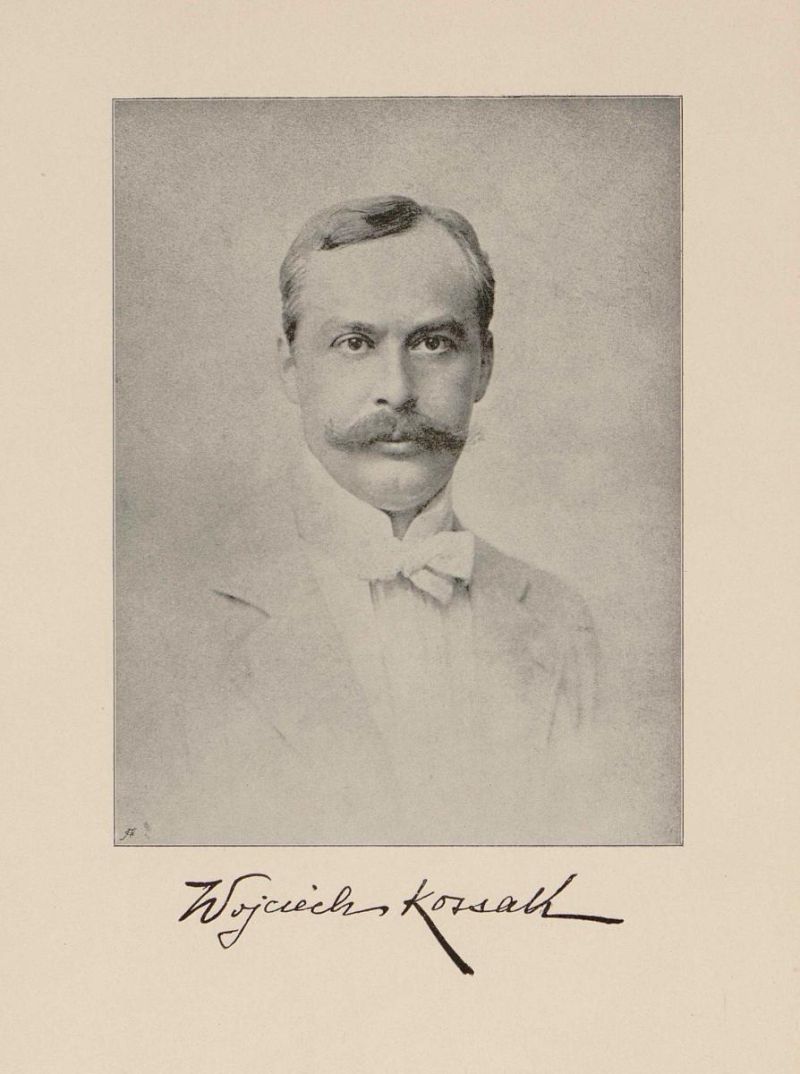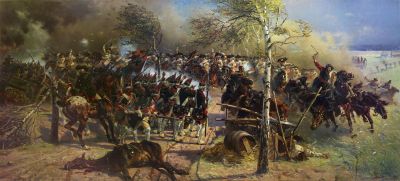Wojciech Kossak: Memoirs, 1913












Kossak's return to Krakow and his stays in Vienna in 1903/04 and London in 1905-07 remain unmentioned in the "Memoirs". The only episode described by the author in the penultimate chapter (p. 303-316) is the preparation and implementation of the celebration of the sixtieth anniversary of the reign of Emperor Franz Joseph I on 12th June 1908 in Vienna. After the murder of the governor of Galicia, Andrzej Kazimierz Potocki (1861-1908), on 12th April in Lviv, the Galician associations had cancelled the Polish contribution to the historical section of the procession. Only two ethnographically motivated groups were to represent Poland, a "Krakow Wedding", prepared by the painters Henryk Uziemblo (1879-1949) and Włodzimierz Tetmajer (1861-1923), and a "Section of Masurian Horsemen", designed by Kossak (p. 304). However, when the Vienna Festival Committee planned to include a group on the history of Polish King Johann III Sobieski in the historical part of the train, Kossak was asked by the Galician side to travel to Vienna, supervise the preparation of the costumes (p. 306 f.) and finally lead the Polish section in the role of King John on horseback (Fig. 8). Kossak vividly reports on the design of the decorations, a failed intrigue to banish the Polish group to the end of the march, and the festive procession past the Emperor on the Vienna Opera Ring (p. 308-315).
IIn a concluding chapter devoid of any internal context and exact dating, Kossak tells of his participation in a cavalry manoeuvre in the Galician village of Chłopy (now Peremoschne) near Komarno (now in the Rajon Horodok/Ukraine) not far from Lemberg (now Lviv), which Emperor Franz Josef I had presumably held in September 1907 with fourteen thousand men (p. 319).[22] The Emperor took up his quarters in the castle of Count Karol de Brzezie Lanckoroński (1848-1933). The aged monarch greeted Kossak personally and was sufficiently informed about his departure from Berlin (p. 321). The painter returned the favour with a series of water-colour menu cards depicting humorous scenes "from military and camp life", which he produced daily for the Emperor (p. 322). In this chapter there are also richly illustrated descriptions of the riders and horses involved in manoeuvres which culminate in eulogies of the Polish cavalry that Kossak puts into the mouths of Austrian and Prussian officers (p. 324). It concludes with a letter from the adjutant of Emperor Wilhelm II, later General August von Mackensen (1849-1945), which reached Kossak in Chłopy and in which he praised Kossak's painting in the Berlin City Palace, "The Grenadiers at Château-Thierry": "His Majesty shared my delight ... Will this be your last brushstroke to the glory of Prussian military feats? (p. 326)
Anyone expecting Kossak's "Memoirs" to provide them with far-reaching information about individual paintings, his style of painting or contemporary art trends will be disappointed. Individual references to the production technique used in the commercially marketed battle panoramas, to Kossak's efforts to reproduce the scenes depicted in the panoramas and battle paintings historically and faithfully by studying literature and travelling to the original locations, as well as the monarch's constant supervision of the works, are, however, valuable for the history of history painting. All in all, however, Kossak places his military duties and experiences, and his close connections to contemporary monarchs, aristocrats and officers, in the foreground: "Fate has granted me the privilege of entering interesting circles and situations as a result of my work". The affirmations of his Polish origin and his love for his homeland, which were intended to correct the negative image he had created in Poland, are reinforced by his desire to live and work in his homeland in the future (p. 330). A photograph taken in front of the entrance to his studio in Zakopane completes the "Memoirs" (Fig. 9).
Axel Feuß, April 2019
[22] The manoeuvre must have taken place before 1908, i.e. before the feast of homage to Franz Joseph I, because Kossak mentions the governor of Galicia, Andrzej Potocki, who died in the assassination attempt that year: "On a beautiful warm September day we were in marching uniform [...] At the threshold of the pavilion waited: the host, Count Lanckoroński in Kontusz and Zupan and the governor Count Andreas Potocki with Countess Lanckorońska.". (p. 320)






















































































